Photos of Hong Kong’s Dimming Neon Noir Landscape
A striking look at Hong Kong’s disappearing neon signs.
Neon signs on Nathan Road. In the foreground, a vast neon sign for the Chinese Palace nightclub. (Photo: Frank Costantini and Kirk Kirkpatrick)
Hong Kong’s first neon factory, Clause Neon Light, opened for business in 1932, and since then bright, warm, flickering neon signs have become synonymous with the city. Across Hong Kong, restaurants, nightclubs, beauty salons, tattoo parlors, cafes, bars and shops had long favored colorful neon light when advertising their services.
However, Hong Kong’s neon heritage is diminishing. Greater regulation has led to the removal of neon signs across the city, and cheaper, more efficient LED technology is being used instead. One of the city’s most iconic emblems is also one of the most unusual examples: a giant neon cow.
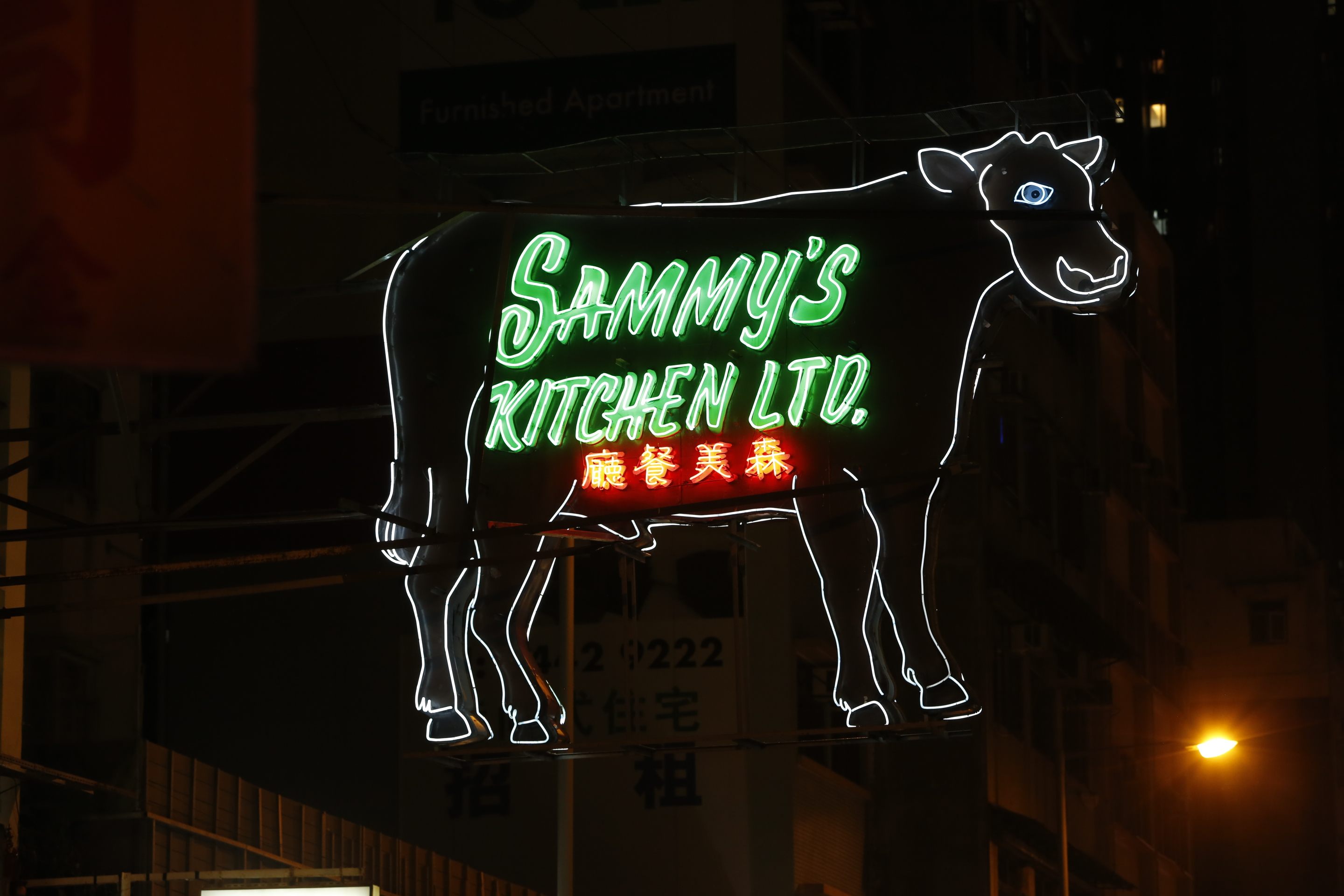

The vast Sammy’s Kitchen neon cow when it still adorned Queen’s Road West. (Photo: Courtesy West Kowloon Cultural District Authority)
In 1978, the owners of a restaurant called Sammy’s Kitchen commissioned a new sign. It was certainly eye-catching: three meters long and 2.4 meters tall, in the shape of an Angus cow. For nearly 40 years the multi-colored sign hung above Queen’s Road West, becoming a local landmark. Yet in 2015 it was deemed an illegal structure and removed.
The cow is just one of many signs that have been ousted across the city in recent years. But Hong Kong’s M+ museum, which is dedicated to visual culture, is working to preserve this unique heritage. The museum has created an online exhibition, which maps, showcases and charts the history of Hong Kong’s neon signs.
“Neon signs once they’re gone are gone,” explains Aric Chen, M+’s lead curator of design and architecture. “We need to recognize their importance to Hong Kong’s intangible cultural heritage before it’s too late.”
The museum has produced a short film called The Making of Neon Signs. It delves into how neon is made, and the challenges faced by neon sign craftsmen, which include fewer commissions and fewer apprentices. “Are there any new neon signs? Of course not. So it’s ‘one sign dismantled, one sign less,’” sign-maker Leung Lap Kei explains in the film.
As for the neon cow of Sammy’s Kitchen, it will have an afterlife. After it was taken down, M+ purchased the sign for its museum space, set to open in 2019, where it will inform visitors of the wonders of Hong Kong by night. Here, a glimpse of the images and sketches from M+’s illuminating exhibition of the city’s neon signage.
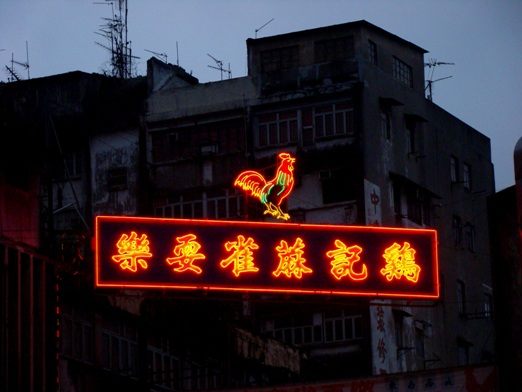
The Kai Kee Mahjong neon rooster in Kwun Tong, which has since been removed. It’s now part of the M+ collection. (Photo: Courtesy Living in Kwun Tong)

A sketch for a neon sign for Percival restaurant. (Photo: Courtesy West Kowloon Cultural District Authority)
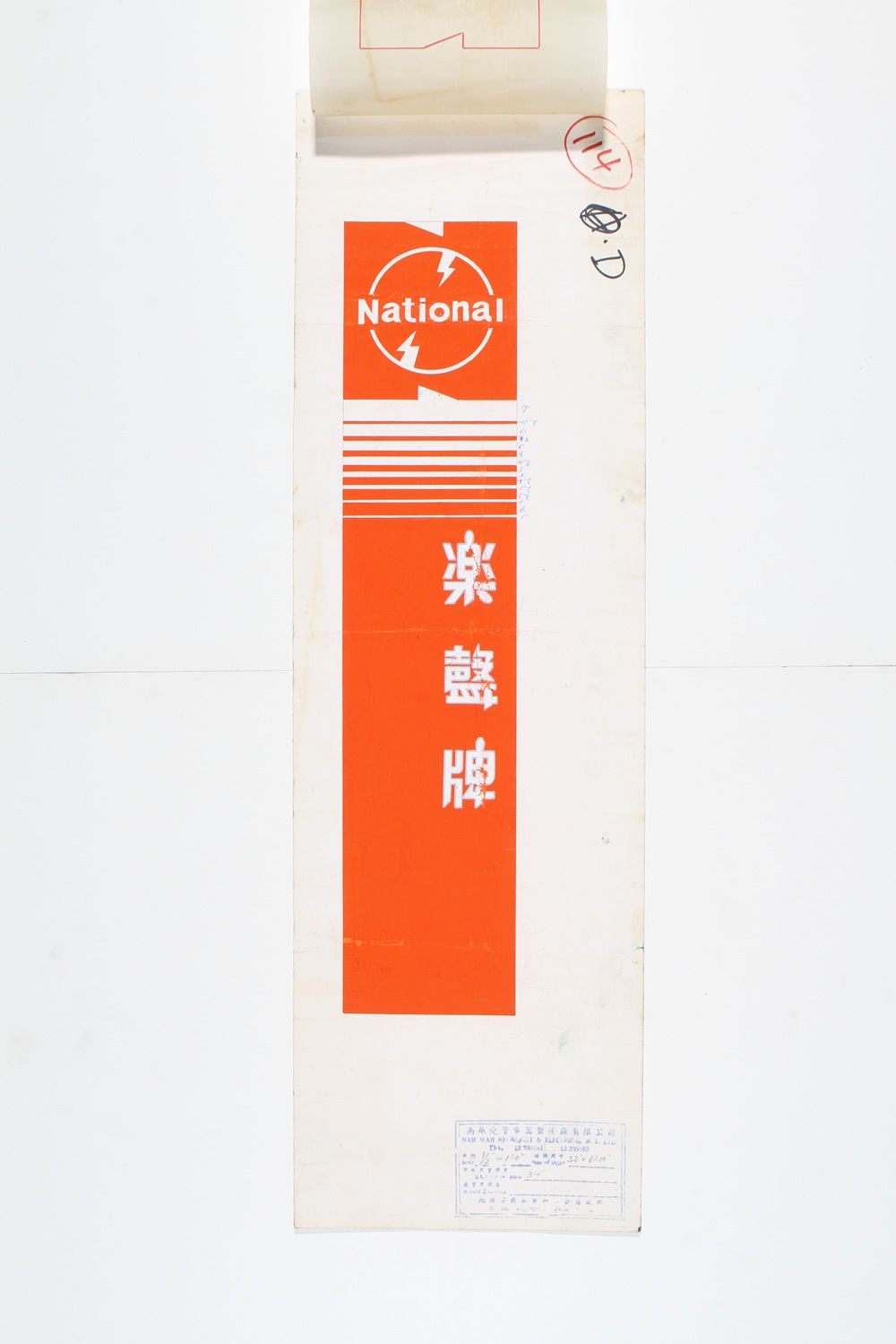
A sketch for the neon ‘National’ sign in Kowloon. (Photo: Courtesy West Kowloon Cultural District Authority)

The finished sign, blazing above Nathan Road. In the 1970s, it held the world record for largest sign. (Photo: Courtesy Nam Wah Neonlight & Electrical Mfy. Ltd)

Eye-catching neon outside Wan Chai’s Suzie Wong nightclub on Lockhart Road, c. 1977. (Photo: Courtesy: Frank Costantini and Kirk Kirkpatrick)

A sketch for a Carlsberg beer neon sign. (Photo: Courtesy West Kowloon Cultural District Authority)

A 1960s- era Tai Po Road. (Photo: Courtesy University Museum and Art Gallery, The University of Hong Kong)

An old neon sign. (Photo: Courtesy Michael Wolf)
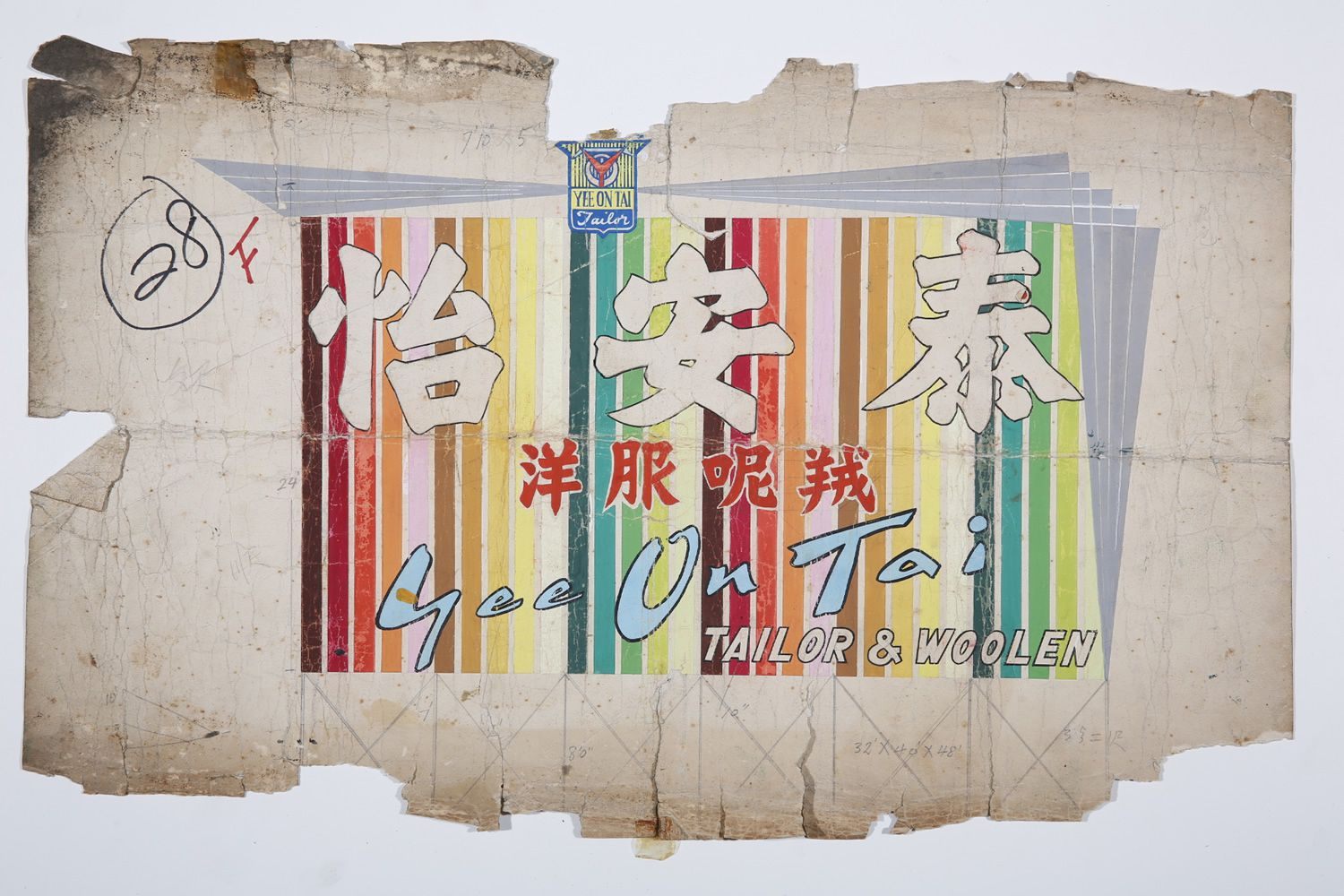
A design for multi-colored neon sign for a tailor. (Photo: Courtesy West Kowloon Cultural District Authority)

A vertical sign for Tsui Wah Restaurant that incorporates a neon tea cup. Next to it, a smiling neon foot. (Photo: Courtesy West Kowloon Cultural District Authority)
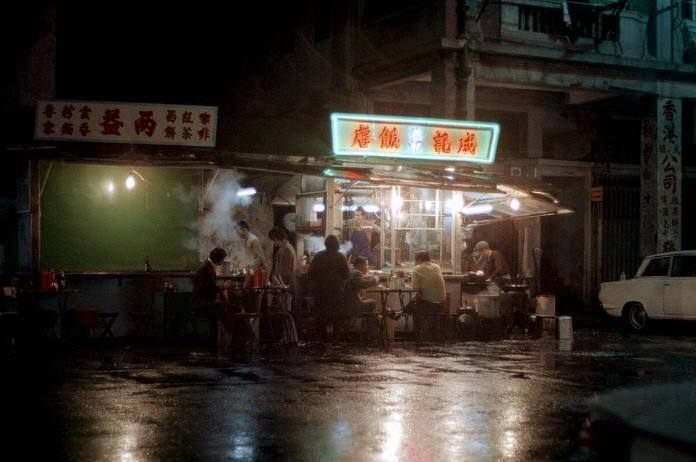
A Chai Wan food stall in the 1980s. (Photo: Courtesy W! Foundation)









Follow us on Twitter to get the latest on the world's hidden wonders.
Like us on Facebook to get the latest on the world's hidden wonders.
Follow us on Twitter Like us on Facebook